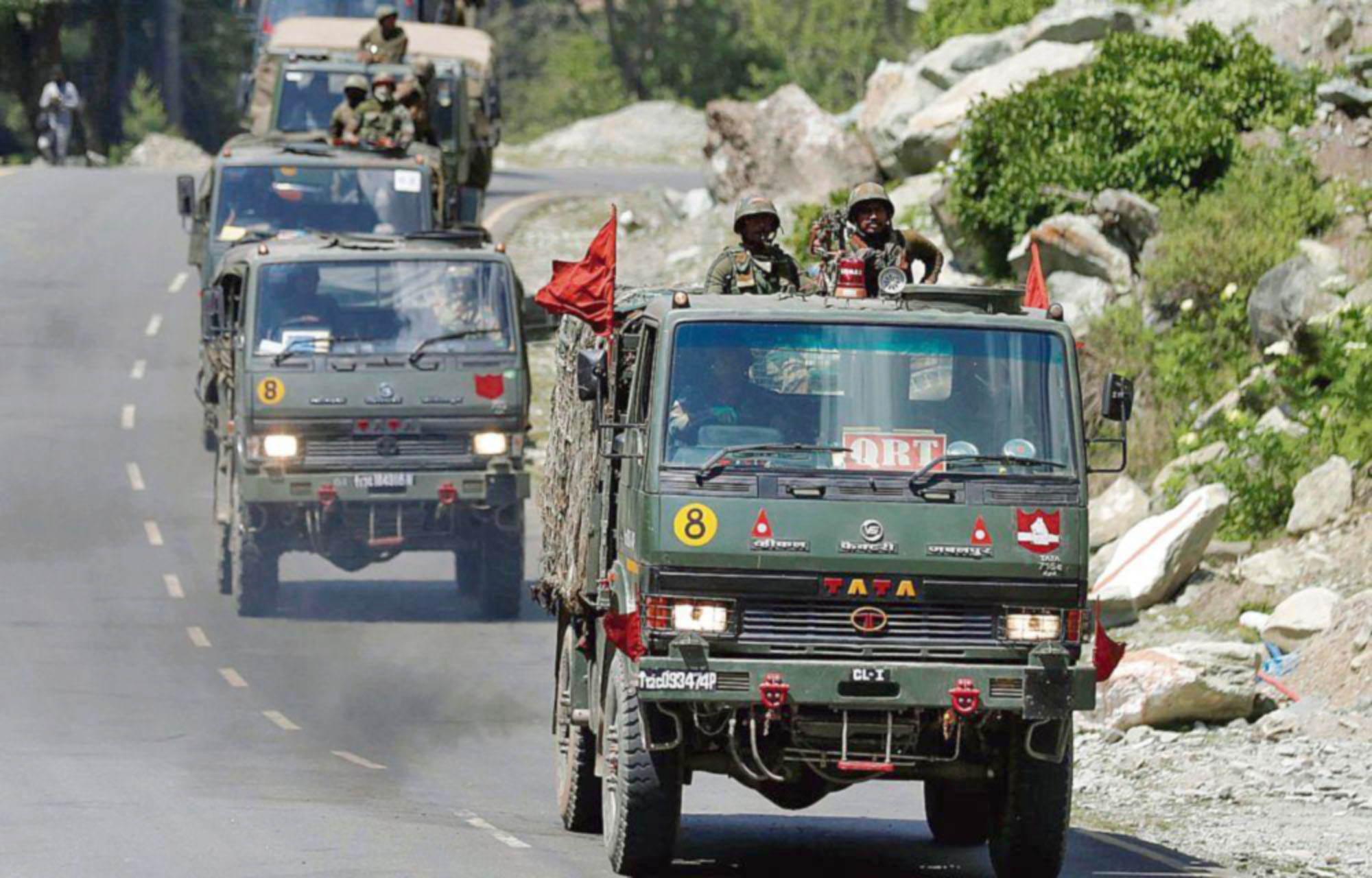Return to status quo ante requires a reset of the calculus of ties
By M K Bhadrakumar
Details of the military standoff in eastern Ladakh remain hazy. Based on satellite imagery, the Australian Strategic Policy Institute has made the following assessment: ‘In all hotspots along the Ladakh sector of India’s border with China, both sides have engaged in significant efforts to build up their forces in forward positions and alter the status quo along the LAC.
‘This week’s deadly skirmish shows that the situation is extremely volatile and introduces the possibility of escalation along the border regions. It could act as a shock to policymakers in the region and spur them to push for more genuine and meaningful disengagement to prevent further loss of life. But it could also spark a larger confrontation between the two nuclear-armed powers that could escalate into a major conflict.’
The Indian leadership, encountering such strong headwinds, has held a steady hand, as signified by the External Affairs Minister S Jaishankar’s call to his Chinese counterpart Wang Yi on June 17 and readiness to participate in the Russia-India-China meeting of foreign ministers on June 23. In essence, decision at the highest level is to maintain strategic communication with China. This is the silver lining on a dark horizon and the only realistic approach possible.
A dangerous situation is at hand, which must be tackled with utmost maturity and patience. There is also a counter-narrative in circulation scripted by some retired Army officers and sections of media that Indian military is in ‘strong position’ to strike back at China, which has to be ‘taught a lesson’, etc. In this supercharged atmosphere, it is no surprise that PM Modi’s initiative to call a meeting on Friday with the leaders of political parties has not had the desired outcome of generating a consensus.
In some ways, the paradigm holds eerie similarity with the late 1950s and early 1960s. Nationalist rhetoric has touched a crescendo. The opposition has inherited it with glee and is set to tap its potential. American commentators are cleverly stoking up anti-China sentiments from behind the scene, which gullible Indians read as affirmation of US support.
The game plan is to force Modi’s hands. But his strong leadership can be trusted to ensure that the government neither stumbles in a stupor nor is hustled into the same trajectory that Nehru tragically took, culminating in the 1962 War. India cannot afford war. The pandemic is surging as a monumental national crisis. India already has the fourth-most confirmed cases in the world.
Equally, economic recovery is a top priority. India’s growth has plunged to abysmally low level and hundreds of millions of people live at subsistence level. In an unfavourable international economic environment, characterised by protectionism and recession, economic recovery is going to be a long haul. The UNCTAD’s World Investment Report 2020 forecasts that global FDI flows will decrease by up to 40% this year, while investment flows to developing countries in Asia could fall by 45%. If border tensions escalate, investment will withdraw.
Jingoism should have no place in our scheme of things. A military confrontation with China will spin out of control and a conflict cannot have an outcome different from that in 1962. We need to seriously probe the Chinese side’s repeated affirmations that they do not want a derailment of the already-shaky bilateral relationship with India. On Friday, Chinese foreign ministry spokesman Zhao Lijian reiterated: ‘China hopes that India will work with us, follow faithfully the important consensus reached between the two leaders, abide by the agreements reached between the two governments, and strengthen communication and coordination on properly managing the current situation through diplomatic and military channels, and jointly uphold peace and stability in the border areas.’
Meanwhile, the all-important economic dimension to India-China relations and the geopolitical vector of current tensions also merit attention. The Chinese side has voiced interest that economic cooperation is still possible. Trade with India accounts for less than 2% of China’s external trade and import diversification is much easier for China than it is for India.
A wide section of Indian manufacturing industry is dependent on supplies from China. Chinese medical supplies significantly strengthen our ability to combat the pandemic; China is a major source for fertilisers, basic chemicals, agro-intermediates, auto components, electronic components and so on. Indeed, China is central to most global and regional supply chains. Suffice to say, economic nationalism is a seductive idea but India lives in Asia where globalisation takes the form of regionalisation. RCEP already poses a Hobson’s choice.
As regards the current tensions, Beijing perceives Delhi’s pivot to the US and the doubling down on the Quad as marking gravitation toward an anti-China bloc. The US fuels this perception to grow, since its traditional European allies refuse to associate with its anti-China strategy and ASEAN countries studiously keep aloof. It will be a strategic blunder of historic proportions if India were to align its interests in the emerging world order with the US regional and global policies, which have China and Russia in its crosshairs as ‘revisionist’ powers.
The Chinese behaviour cannot be viewed either as the outburst of a weakened power in internal disarray or as belligerence aiming at territorial expansion in Ladakh. It is entirely conceivable that China harbours security concerns over Aksai Chin. There could be a political message embedded somewhere here that a return to status quo ante requires strategic communication and a reset of the calculus of Sino-Indian relationship.


